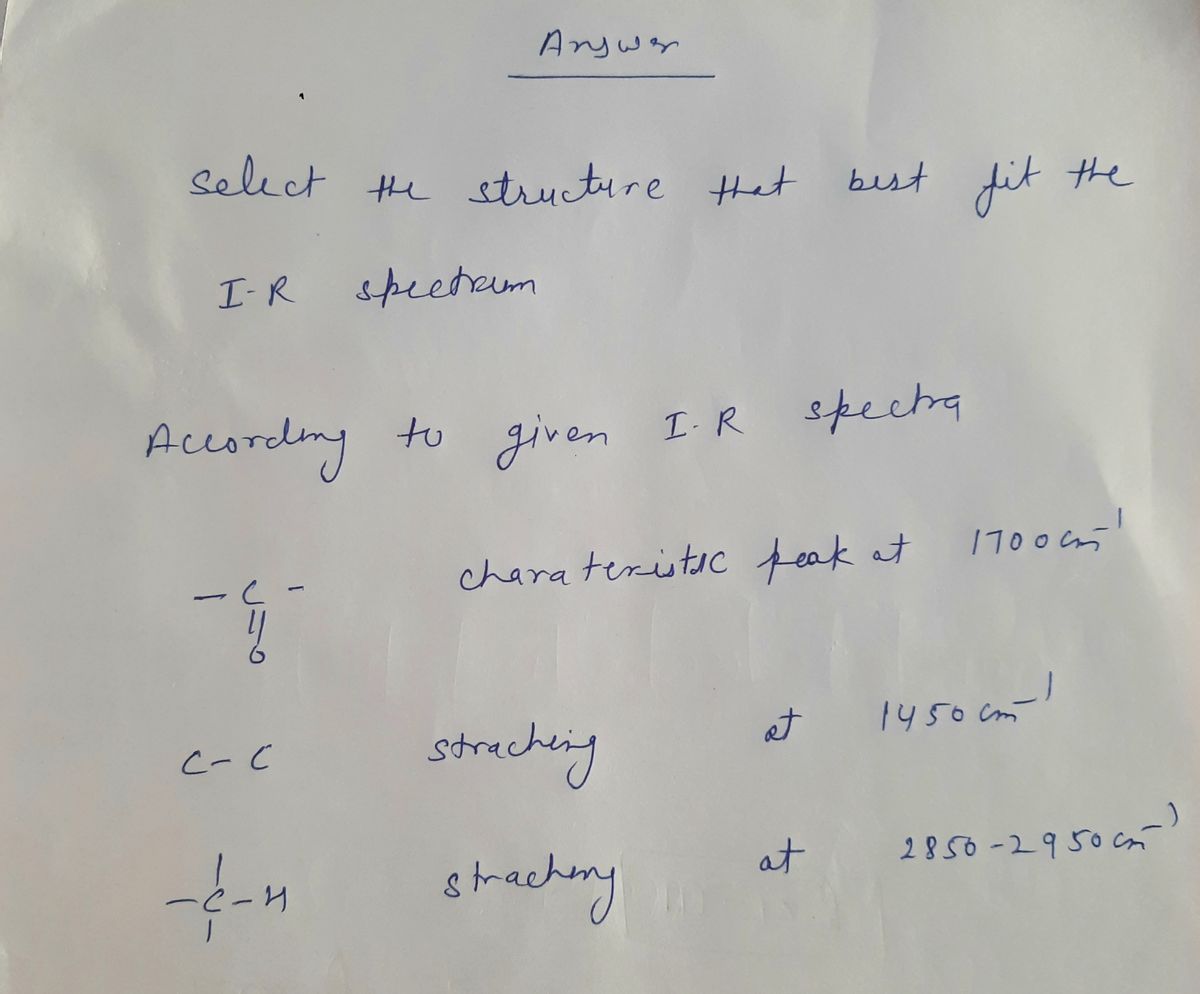**Select the structure that best fits the IR spectrum.** The given image includes five different chemical structures labeled A, B, C, D, and E. Below these structures is an infrared (IR) spectrum graph. ### Structures: - **Structure A**: Features a carbonyl group (C=O) bonded to an alkyne group. - **Structure B**: Includes a carbonyl group adjacent to a methyl group on a benzene ring. - **Structure C**: Contains a carbonyl group with an adjacent ethyl group on a benzene ring. - **Structure D**: Shows a benzene ring bonded to a primary alcohol group. - **Structure E**: Has a carbonyl group bonded to an ethyl group. ### IR Spectrum Graph Explanation: - **X-axis (Wavenumber cm⁻¹)**: Ranges from 4000 to 600 cm⁻¹ and indicates the frequency of vibration. - **Y-axis (% Transmittance)**: Shows the percentage of transmittance as a function of the wavenumber. - **Key Peaks**: - A broad peak near 3400 cm⁻¹, likely indicating an O-H stretch, suggesting an alcohol. - Sharp peaks around 1700 cm⁻¹ suggesting C=O stretching. - Various C-H stretching peaks in the 3000-2850 cm⁻¹ range. ### Options: - ○ STRUCTURE A - ○ STRUCTURE B - ○ STRUCTURE C - ○ STRUCTURE D - ○ STRUCTURE E Select the structure that correlates with the key features and characteristic peaks of the IR spectrum provided.
Analyzing Infrared Spectra
The electromagnetic radiation or frequency is classified into radio-waves, micro-waves, infrared, visible, ultraviolet, X-rays and gamma rays. The infrared spectra emission refers to the portion between the visible and the microwave areas of electromagnetic spectrum. This spectral area is usually divided into three parts, near infrared (14,290 – 4000 cm-1), mid infrared (4000 – 400 cm-1), and far infrared (700 – 200 cm-1), respectively. The number set is the number of the wave (cm-1).
IR Spectrum Of Cyclohexanone
It is the analysis of the structure of cyclohexaone using IR data interpretation.
IR Spectrum Of Anisole
Interpretation of anisole using IR spectrum obtained from IR analysis.
IR Spectroscopy
Infrared (IR) or vibrational spectroscopy is a method used for analyzing the particle's vibratory transformations. This is one of the very popular spectroscopic approaches employed by inorganic as well as organic laboratories because it is helpful in evaluating and distinguishing the frameworks of the molecules. The infra-red spectroscopy process or procedure is carried out using a tool called an infrared spectrometer to obtain an infrared spectral (or spectrophotometer).


Trending now
This is a popular solution!
Step by step
Solved in 2 steps with 2 images









